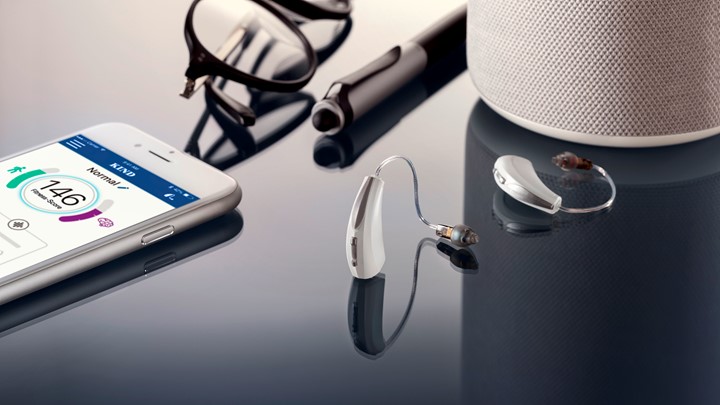Hearing aids have come a long way from their rudimentary origins. Today’s hearing aid machines are sophisticated devices powered by advanced technology, designed to enhance the lives of those with hearing impairments. This article will take you on a deep dive into how hearing aid machines work, focusing on the technology behind digital hearing aids and the innovations that are driving the future of hearing aid devices.
The Basics: What Is a Hearing Aid Machine?
At its core, a hearing aid machine is a small electronic device that amplifies sound, making it easier for people with hearing loss to hear. The primary components of a hearing aid include a microphone, an amplifier, a speaker (or receiver), and a battery.
Key Components:
- Microphone: Captures sound from the environment.
- Amplifier: Increases the volume of the sound.
- Speaker (Receiver): Delivers the amplified sound into the ear.
- Battery: Powers the hearing aid.
These components work together to pick up sounds from the environment, amplify them, and deliver the enhanced sound to the ear, allowing users to hear more clearly.
The Evolution: From Analog to Digital Hearing Aids
Analog Hearing Aids:
In the past, hearing aids were analog devices. These devices amplified all sounds equally, often leading to issues with background noise and difficulty distinguishing between different types of sounds. Analog hearing aids were simple in design but lacked the precision and flexibility required for a truly personalized hearing experience.
Digital Hearing Aids:
The introduction of digital hearing aids marked a significant leap in hearing aid technology. Unlike analog devices, digital hearing aids convert sound waves into digital signals. This allows for more complex processing of sound, enabling the device to differentiate between speech and background noise and adjust the amplification accordingly.
How Digital Hearing Aids Work:
- Sound Capture: The microphone picks up sound from the environment.
- Analog-to-Digital Conversion: The sound is converted into digital data, allowing for advanced processing.
- Signal Processing: The digital signal processor (DSP) inside the hearing aid analyzes the sound, filtering out noise and enhancing speech frequencies.
- Amplification: The processed sound is amplified based on the user’s specific hearing loss profile.
- Digital-to-Analog Conversion: The digital signal is converted back to analog and sent to the receiver.
- Sound Delivery: The receiver delivers the enhanced sound into the ear.
Benefits of Digital Hearing Aids:
- Noise Reduction: Advanced algorithms reduce background noise, making it easier to focus on speech.
- Directional Microphones: These help in focusing on sounds coming from a particular direction, improving clarity in noisy environments.
- Feedback Cancellation: Digital hearing aids can detect and eliminate the annoying whistling sound (feedback) often associated with hearing aids.
- Customizable Sound Profiles: Users can personalize settings based on their environment and preferences.
Modern Innovations in Hearing Aid Machines
Hearing aid technology continues to evolve, with new innovations aimed at improving sound quality, user comfort, and overall functionality. Here are some of the most significant advancements in hearing aid devices:
1. Bluetooth Connectivity:
Modern digital hearing aids often come equipped with Bluetooth technology, allowing them to connect wirelessly to smartphones, TVs, and other devices. This feature enables users to stream phone calls, music, and other audio directly to their hearing aids, providing a seamless and integrated listening experience.
2. Rechargeable Batteries:
Traditional hearing aids required frequent battery changes, which could be inconvenient for users. Today’s rechargeable hearing aids use lithium-ion batteries, providing all-day power with the convenience of overnight charging. This not only reduces the need for battery replacements but also supports a more eco-friendly approach.
3. Artificial Intelligence (AI):
Some of the latest hearing aids incorporate AI to learn from the user’s preferences and automatically adjust settings in real-time. For instance, if you frequently visit noisy environments, the hearing aid can recognize this pattern and preemptively adjust its noise reduction settings, providing an optimized listening experience without manual intervention.
4. Remote Programming:
Thanks to cloud-based technology, hearing aids can now be adjusted remotely by hearing care professionals. This means that users can receive real-time adjustments and updates without needing to visit a clinic, making hearing care more accessible and convenient.
5. Tinnitus Management:
Many modern hearing aids include built-in tinnitus management features. These generate soothing sounds or white noise to help mask the ringing in the ears associated with tinnitus, providing relief alongside hearing improvement.
6. Water-Resistant and Durable Designs:
Advances in materials and design have made many hearing aids more durable and resistant to water, dust, and sweat. This is especially beneficial for active users who need their hearing aids to withstand various environmental conditions.
The Future of Hearing Aid Technology
Looking ahead, the future of hearing aid technology is bright, with ongoing research and development aimed at further enhancing these devices’ capabilities. Some areas of focus include:
- Augmented Reality (AR) Integration: Potential future innovations may integrate AR features, allowing users to receive visual cues or information through their hearing aids.
- Health Monitoring: Hearing aids might soon be able to monitor vital signs, track activity levels, and even detect falls, making them multi-functional health devices.
- Improved AI Learning: As AI continues to evolve, hearing aids could become even smarter, learning from a user’s environment and habits with increasing accuracy.
Conclusion
The modern hearing aid machine is a marvel of technology, combining advanced digital processing with innovative features that significantly enhance the user’s hearing experience. Whether it’s through noise reduction, AI-powered adjustments, or seamless connectivity with other devices, today’s hearing aids are designed to offer a highly personalized and effective solution for hearing loss.
As technology continues to advance, the gap between hearing aids and natural hearing will continue to narrow, making these devices more powerful and user-friendly than ever before. If you’re considering a hearing aid, it’s essential to understand the available technologies and choose a device that best meets your needs and lifestyle. With the right hearing aid, you can enjoy clearer, more vibrant sound and improved communication in every aspect of your life.












